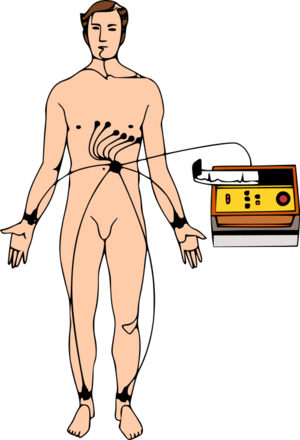An analysis of electrical heart tracings from thousands of patients has  revealed a new way to spot those at risk of repeat heart attacks.
revealed a new way to spot those at risk of repeat heart attacks.
University of Michigan scientist Zeeshan Syed and his colleagues, writing in Science Translational Medicine, used a computer to marry up clinical outcomes with the features present in long-term electrocardiogram (ECG) recordings of over 4500 people who had undergone a recent heart attack.
They were able to define three characteristic "biomarkers" that could be used to predict an individual patient's risk of further heart problems. These they have called Morphological variability (MV), which looks at how the shape of the ECG tracing changes over time, the Symbolic Mismatch (SM), which compares an individual patient's ECG trace with those of other patients with a similar clinical history, and the Heart Rate Motif (HRM), which looks at how often "risky" patterns of heart rate activity crop up in an individual's recordings.
Incorporating these assessments into the existing protocols used to calculate a patient's risk could, they say, enable doctors to better identify those patients most in need of close monitoring or more intensive drug therapies; on the flip side, it could also potentially spare patients who are actually at a lower risk than first thought from having more rigorous interventions that they don't require. Moreover, as the scientists point out in their paper, "these biomarkers can be extracted from data that are already routinely captured from patients with acute coronary syndrome and will allow for more accurate risk stratification and potentially better patient treatment."










Comments
Add a comment